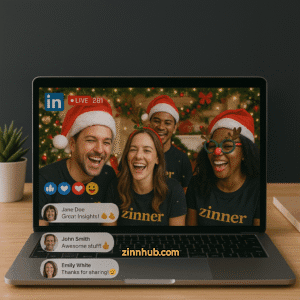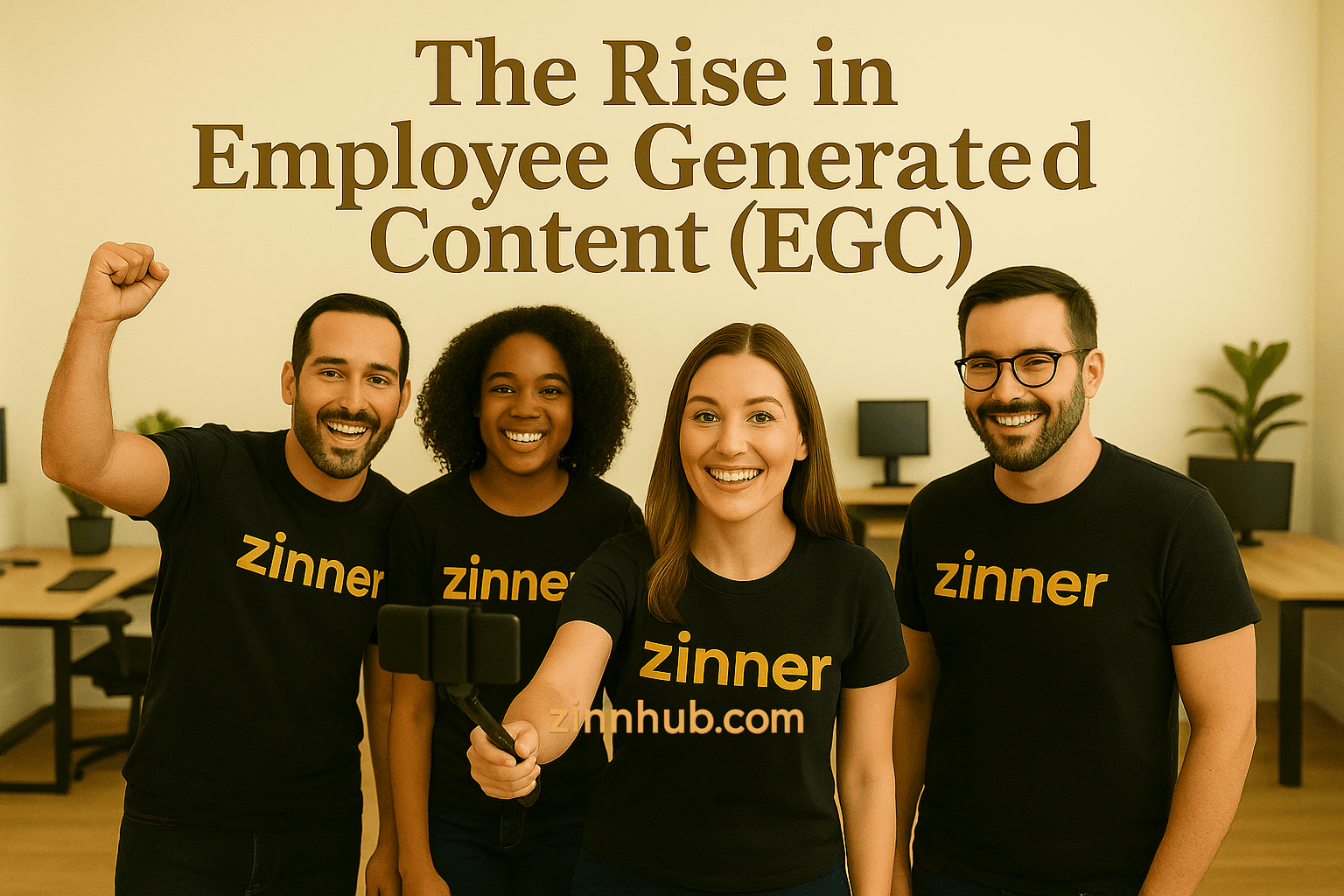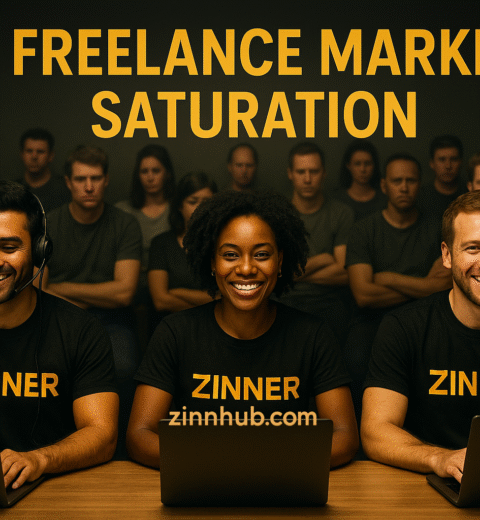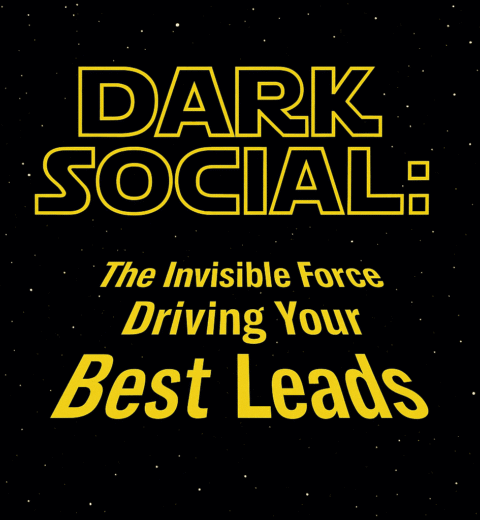Table of Contents
- What Is Employee-Generated Content?
- What Kinds of Employee Content Actually Work?
- The Video Revolution
- Why EGC Matters: The Stats That Tell the Story
- Why LinkedIn Is the Ultimate Platform for EGC
- How Leading Brands Make EGC Work
- Making It Happen: Your EGC Playbook
- EGC Challenges and How to Handle Them
- How to Measure if Your EGC Is Working
- A Word of Warning: Authenticity Is Everything
- The Future Is Human
- Ready to Give Your Employees the Mic?
The rise in employee generated content (EGC) is one of the most interesting shifts in digital marketing right now—and honestly, it’s about time. If you work in business, you’ve probably noticed the same old corporate comms: safe, over-edited, and frankly a bit dull. But in 2025, something has changed. Ordinary people at all levels are picking up their phones or laptops and just… telling it how it is. Suddenly, brands sound human again.
Gone are the days when only the PR team spoke for a company. These days, the best stories come straight from the people actually doing the work. That’s EGC in action: honest, everyday moments—sometimes polished, sometimes not—that actually make us care.
What Is Employee-Generated Content?
Let’s keep it simple. Employee generated content—EGC for short—is anything your team creates and shares about their work. It might be a quick LinkedIn post, a day-in-the-life video, a photo, a blog, or even just a candid story about what really goes on behind the scenes. The difference? It comes from actual people, not the PR department. And in a world where 94% of consumers say they’re more loyal to brands that are transparent (DAC Group, 2025), there’s nothing more transparent than letting your employees do the talking.
EGC has quietly moved from a marketing ‘extra’ to a genuine business advantage. Companies that get it right are reaping the rewards—think better recruitment, more trust, and a bigger, more loyal audience.

What Kinds of Employee Content Actually Work?
If you’re picturing the odd staff selfie, think bigger. The best EGC takes many forms:
- Social posts: Those “day in the life” videos, little wins at work, even onboarding announcements that give outsiders a glimpse of company culture.
- Employee blogs: Insightful write-ups about roles, career journeys, or new industry trends—straight from the people doing the work.
- Video testimonials: Honest, unfiltered stories about the highs, the challenges, and what it’s really like behind the logo.
- Behind-the-scenes snaps: Photos or short clips that capture team moments, events, or everyday magic (and yes, the outtakes count).
- Dedicated EGC accounts: Starbucks, for example, on Instagram—an entire feed run by employees, for employees.

The Video Revolution
Let’s be honest: we’re all watching more video than ever. In fact, video now accounts for 82.5% of global internet traffic (Demandsage, 2025). No wonder brands are encouraging their teams to share everything from “day-in-the-life” vlogs to quick clips of life at work, whether that’s on TikTok, LinkedIn, or Instagram. It’s the sort of content people actually want to watch—and it’s the furthest thing from a stuffy press release.
Carrie Gandemer, Head of Advocacy at Wiser, captured it perfectly when discussing the future of employee content:
“I think there’ll also be a greater emphasis on storytelling and video content specifically, versus the classic written LinkedIn posts”.
And honestly, isn’t that what we all prefer? Real faces, real talk.
Why EGC Matters: The Stats That Tell the Story
Here’s where things get interesting. EGC isn’t just a warm-and-fuzzy idea—it’s a modern marketing game-changer, with the data to back it up:
- 76% of people trust content shared by employees over brand posts (Single Grain, 2025).
- 50% of employees are willing to share company content regularly (Speakap, 2025)
- Employee posts on LinkedIn average 894,290 impressions (DSMN8, 2025)
- Employee content generates eight times more engagement than company pages (Single Grain, 2025).
- Companies with engaged employees outperform their competitors by over 200% (Gallup, 2024).
- Employee advocacy programmes attract 58% more top talent and boost retention by 20% (Speakap, 2025)
- 79% of job seekers check social media before applying for a job (CareerArc, 2024).
So, whether you’re hiring, building brand loyalty, or just want your posts to actually get seen, EGC makes a tangible difference.
Why LinkedIn Is the Ultimate Platform for EGC
If there’s one place where EGC really shines, it’s LinkedIn. LinkedIn remains where serious B2B networking is happening. The platform has passed 1.15 billion monthly users (Statista, 2025), and here’s the kicker: your average employee’s network is ten times the size of your brand’s follower list (NoGood, 2024).
Plus, around 30% of LinkedIn engagement comes from employee-generated content (Speakap, 2025). LinkedIn’s algorithm loves authentic interaction, especially posts that spark genuine comments and conversations—not just a flood of likes.

How Leading Brands Make EGC Work
Some of the world’s best-known names are putting employees front and centre:
- Starbucks: @starbuckspartners is a whole Instagram channel dedicated to employee stories and community projects. Starbucks encourages employees, referred to as “partners,” to share their experiences using the hashtag #ToBeAPartner.
- Adobe: Their #AdobeLife hashtag (and Instagram page) is a showcase for real workplace stories.
- Airlines like United, Delta, and Emirates: Using honest employee stories to rebuild trust and show what really happens behind the scenes.
- Papa John’s: Papa John’s employees, such as those featured in TikTok videos like “Dough Joe Elite Employee,” share content demonstrating their pizza-making skills, including dough-spinning.
- Salesforce: Salesforce employees share day-in-the-life content on platforms like TikTok, providing insights into their work experiences and company culture.
- Spotify: Spotify’s internal communications strategy includes sharing behind-the-scenes content to engage employees and showcase company culture.
- SheerLuxe: UK-based fashion and lifestyle publication SheerLuxe created a spin-off account, Luxegen, dedicated to employee-generated content.
- Anthropologie: Anthropologie’s European team actively engages in creating TikTok content, sharing relatable and authentic employee experiences.
- Deloitte: Deloitte has embraced employee-generated content strategies, including hiring full-time influencers to authentically promote their culture and values through engaging content.
Making It Happen: Your EGC Playbook
A great EGC programme isn’t about turning everyone into an influencer—it’s about making space for real voices and stories. Here’s what works:
- Let people be themselves: Encourage creativity and personal style—don’t micromanage the message.
- Offer support, not scripts: Training and basic resources are helpful, but don’t force a particular tone or over-edit content.
- Keep it fun: Sometimes, a coffee voucher, a public shout-out, or featuring a story in your newsletter is all it takes to get people involved.
- Celebrate your storytellers: Shout out those who share great stories, and show genuine appreciation.
- Set simple, flexible guidelines: Help employees know what’s okay to share, but leave room for their own judgement.
- Never force participation: This is crucial—EGC should always be voluntary. Nothing kills authenticity like an employee who feels pressured to ‘perform’ for the brand.

EGC Challenges and How to Handle Them
No surprise, there are a few hurdles with EGC. You want to keep things authentic, but you also need to stay on brand. The answer? Give guidance without being heavy-handed. It’s smart to have clear (but simple) policies for things like confidentiality, tone, and what’s genuinely ‘off-limits’. And if someone gets it wrong, use it as a learning moment—not a reason to shut things down.
How to Measure if Your EGC Is Working
Want to know if your EGC efforts are actually making an impact? Keep an eye on:
- Engagement: Likes, comments, shares—are people interacting?
- Website traffic: Are you seeing more visits when employees post?
- Employee referrals: Are more people applying after seeing EGC?
- Content performance: Try different formats and topics, and see what hits.
Plenty of tools—Metricool, Hootsuite, or even LinkedIn’s built-in analytics—make this easy. Don’t be afraid to experiment and tweak your approach.
A Word of Warning: Authenticity Is Everything
A final (but vital) tip—don’t fake it. We’ve all seen those cringe-worthy posts where employees suddenly sound like walking press releases, gushing about their “synergistic workplace solutions” when you know they’d never talk like that at the pub.
The FTC has strict rules against fake testimonials and can impose civil penalties up to $43,792 per violation. Even employee endorsements require clear disclosure of the employment relationship. But honestly? The legal stuff isn’t even the biggest risk here.
The real danger is that today’s audiences have “built-in authenticity scanners”—detectors that would make airport security jealous. They can spot the difference between Karen from accounting sharing a genuine win versus Karen being handed a script by marketing. It shows in everything—the language feels off, the enthusiasm seems forced, and the whole thing just feels… wrong.

When companies try to control the narrative too tightly, it shows. Maybe it’s asking employees to post at specific times, or giving them exact phrases to use, or—worst of all—having marketing write posts “on behalf of” employees. Your audience isn’t daft. They’ll notice when five employees post suspiciously similar content on the same day.
The irony? The posts that perform best are usually the messy, imperfect, genuinely human ones. The ones where someone’s genuinely excited about landing a big client, or shares a funny office moment, or talks honestly about a challenge they overcame. That’s the stuff that builds real trust and connection.

So keep it real. Give your employees guidelines, not scripts. Encourage stories, not sales pitches. Because in the end, one authentic employee story is worth a hundred manufactured ones—and your audience (and the FTC) will thank you for it.
The Future Is Human
It’s easy to get swept up in the latest tech, but at the end of the day, what makes EGC so powerful is its humanity. People want to hear from other people—not just the brand. Think about it. Corporate videos? Boring. But that LinkedIn post where someone’s proper buzzing about fixing a nightmare problem? That’s the stuff that sticks.
We’re all a bit fed up, aren’t we? Every day it’s AI this, algorithm that. Perfect content everywhere that somehow manages to say… absolutely nothing. Real stories from real people? Now that’s different. That’s what cuts through. Your employees aren’t walking CVs. They’re people. With lives. Stories. Good days, bad days, and everything in between. That’s what makes them ace at telling your brand’s story—because they’re living it.
Here’s what I think: perfection is overrated. People don’t want perfect. They want real. They want to know there’s an actual human behind that logo who gets what it’s like to be, well, human.
That’s EGC’s superpower. Not the tech. Not the metrics. Just people being people. And it really works.
Ready to Give Your Employees the Mic?
Employee-generated content isn’t a passing fad. It’s a smarter, more human way to build trust, attract talent, and make sure your brand stands out for all the right reasons. The companies that will thrive are the ones willing to step back, hand over the microphone, and let their people tell the real stories.
So as you plan out your content for 2025 and beyond, ask yourself—are you ready to let your employees become your brand’s strongest advocates? The numbers, and your audience, say you should be.




